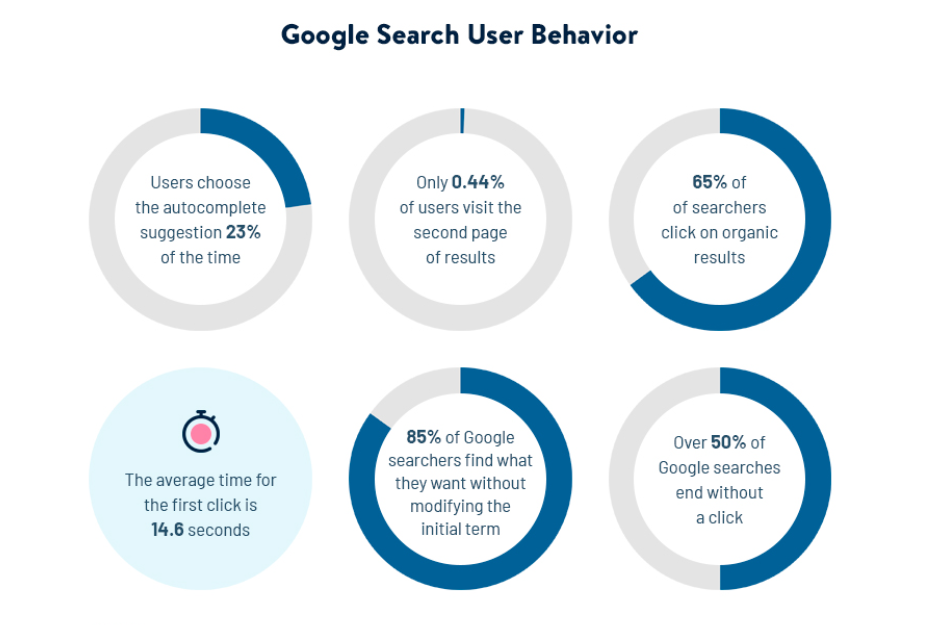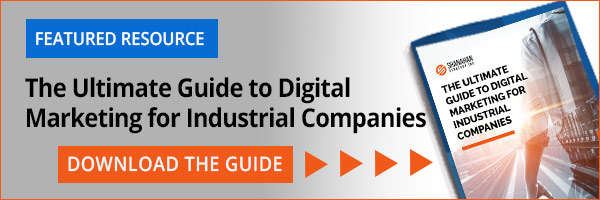As the global business shifts into a more digital marketplace, manufacturers need to find new ways to break into markets and close international deals. If you plan on serving customers in multiple countries with diverse languages and cultures, exploring an international search engine optimization (SEO) for manufacturers strategy is crucial for your ability to scale.
In this post, you’ll discover why an international SEO strategy is essential and the critical best practices to help you master search engine results pages (SERPs). With the share of organic search traffic recently increasing at 53% and generating 2x more traffic than any other channel, it’s more important than ever for manufacturers to develop a strategy that boosts their bottom line.
Ready to learn more about international SEO strategy? Let’s dive in!
Key Takeaways:
- International SEO optimizes your website for search engines to display your website in SERPs.
- You need to set up technical components like hreflang tags and URL structures.
- Creating localized content is the best way to appear credible to users and search engines.
What is International SEO for Manufacturers?
International SEO optimizes your website for search engines to identify which countries you do business with quickly and the languages your company uses. By using tactics like hreflang tags, localization signals, and geo-targeting, you can leverage international SEO to reach your ideal audience across the globe.
With over 360 billion internet searches in 2021 alone, leveraging SEO is the best way to ensure your website is crawled and found by search bots. How does this work? Google, and other popular search engines, match search results to the user’s location and language. Search engines crawl your site to determine whether your content suits someone in another country by utilizing specific signals.
The Importance of Global SEO for Manufacturers
If your manufacturing business is global or looking to expand in new markets, international SEO helps improve your overall visibility to build a more substantial customer base. It will also help establish your business in different countries by highlighting your global brand to competitors and potential customers.
International SEO for manufacturers enables the following benefits:
- Boosts your overall credibility in the marketplace
- Keeps your budget intact – SEO is free!
- Supports content marketing initiatives
- Gives you a competitive advantage in new and existing regions
- Maximizes pay-per-click (PPC) campaigns to keep your site on top of SERPs
- Helps you reach new audiences and improves engagement

Is Your Business Ready to Expand Globally?
If you notice that many website visits are coming from a different country or you’re ready to expand, it’s a good practice to update your website and prepare for global visitors.
SEO is all about prioritizing and organizing your resources to tackle the essential tasks first. Before jumping into best practices, you want to ensure you have the proper internal infrastructure and technical ability to support international SEO.
Here are a few considerations to keep in mind before getting started:
- Conduct market research: You want to ensure there is a market for your products in different countries and get a grasp on the competitive landscape.
- Understand the logistics: Set your business up to funnel customer inquiries, prospects, international shipping, and more to handle different global market operations.
- Nail the messaging: Think more locally by tailoring your message to each geographic region and speaking their language, not a jumbled mess that doesn’t translate.
6-Step Checklist to Mastering International SEO for Manufacturers
On the surface, it may seem like international SEO for manufacturers is an entirely foreign concept compared to more localized efforts. With geo-targeting, you’re optimizing your website for different countries and languages instead of local features.
To help you get started, here are six essential steps:
1. Setting Up Hreflang HTML
Hreflang tags are snippets of HTML code used in website content to notate multiple different languages. The tags help search engines crawl your website and match the language with the user. For example, Italian speakers will see Italian content instead of your French or English content.

While search engines can detect a page’s language without hreflang tags, they help prevent different versions of your content from competing against each other in search results. Hreflang tags are helpful when you provide translations of your content in subdomains or subdirectories, but not necessary if you’re using separate domains.
It’s also important to note that hreflang tags don’t work with Baidu or Bing, which utilize content-language meta tags instead.
2. Choosing the Correct URL Structure
For your content to reach your target audience, you need to determine URL structures based on country code top-level domains (ccTLDs), subdirectories, and subdomains. While this will vary depending on your resources, ideally, you’ll want to manage several domains with ccTLDs or a subdirectory structure.
However, you’ll want to consider all options:
-
- ccTLD: Uses two-letter codes that indicate the sovereign state, territory, or country like example.us
- Subdomain: International content that uses third-level domains like us.example.com
- Subdirectory: International content that acts as a top-level domain like example.com/us
- gTLD with language parameters: Top-level domain that targets specific languages like example.com/?lang=en-us
- Unique domain: International content is located on a different root domain like exampleussite.com
3. Avoid Translation Plugins
Did you know that 13% of Google searches are translation-related? Although it might be easier to install translation software on your website and wash your hands of the task, it’s crucial to avoid anything that promises a complete site translation.
Why? Translation plugins don’t pick up on language nuances and dialects that your target audience will notice. Instead, consider employing local translators who will allow you to earn a better share of voice by embracing their language and culture. In turn, localized translations will help you build better credibility in new markets with prospects interacting with your brand.
4. Target Using Specific Local Keywords for Different SERPs
With less than half of all Google searches resulting in a click, it’s more important than ever to target your content with the right keywords to match the user’s search intent. However, while Google’s algorithm is universal, SERPs vary depending on the global region. For example, searching for your products in Norway will provide completely different results than in Canada.
Consider these language differences:
- “Football equipment” has a different meaning in the U.K. and U.S.
- “Gift” has a different meaning in Germany and the U.S.
- “Preservative” has a different meaning in France and the U.S.
- “Air” has a different meaning in Indonesia and the U.S.
Along with understanding the real meaning of your keywords to various audiences, you’ll want to start by analyzing local SERPs and watching for any volume changes. This means staying on local trends to optimize your content in every market. You’ll then want to utilize the keywords that match substantial volumes and search intent in your target countries.
5. Create Quality Content and Links
The common saying “content is king” remains an essential strategy for international SEO, especially if you’re entering a saturated market. Google recommends implementing “E-A-T” – expertise, authoritativeness, and trustworthiness – to ensure your content helps build trust and credibility with your audience.
When writing your content, you want to provide value that educates prospects on your products and showcases your key differentiators. Do you want to become a global thought leader in your industry? Provide quality resources that display your product benefits? Make this clear in every content piece.
Here are a few elements to highlight for both users and search engines:
- Show biographies and author names in editorial content
- Optimize your lower-quality content
- Build your business’s brand by displaying clear messaging and value
- Use technical on and off-page SEO
- Display user-generated content like reviews and testimonials to highlight your credibility
Your backlink strategy is also an important ranking factor that helps you gain global authority. Instead of collecting any link, focus on those with higher domain authority in different global regions since local links have a higher impact. For example, earning backlinks with a URL ending in “.it” signals to SERPs that your website serves users in Italy and should rank in local result pages.
6. Support SEO Efforts with Signals
To successfully rank in international results, you need to take a holistic approach that focuses on user-friendly taxonomy and core content pillar themes. Beyond the on and off-page SEO tactics, you’ll also want to consider:
- Different search engine preferences: While Google holds the largest market share in the U.S., Baidu is popular in China and Yandex in Eastern Europe. Each of these has unique algorithms to consider.
- Various device preferences: People in different countries may access your website in unique ways, so understanding if they prefer desktop, mobile, or tablet can help you optimize.
- Local idiosyncrasies: To better signal certain countries or languages, consider using links to popular social media platforms, local currencies, and location data like addresses in your content.
Growing Your Business with a Global SEO Strategy
International SEO for manufacturers allows you to serve prospects better, improve search rankings, and expand into new global markets by customizing your content and experience. By implementing best practices and local SEO signals, you’ll be able to optimize your website for different countries and languages you want to serve.
Are you expanding globally? Build your marketing strategy and grow your pipeline with Shanahan Strategy.

